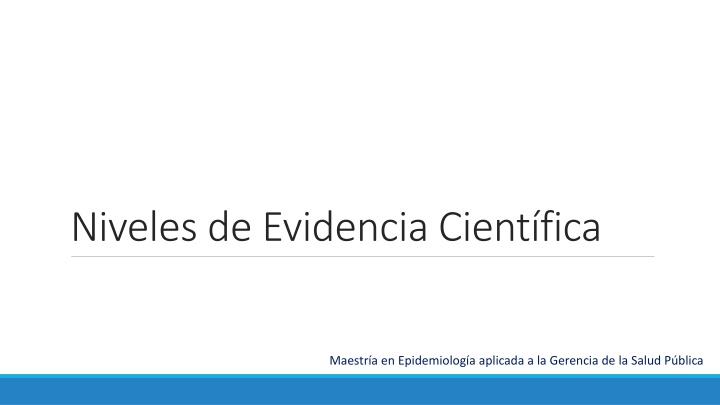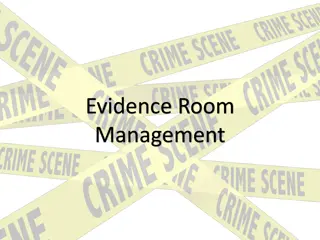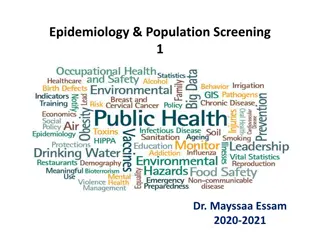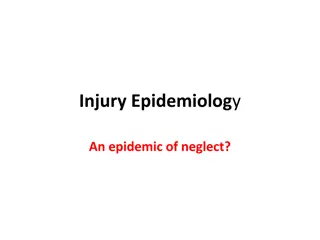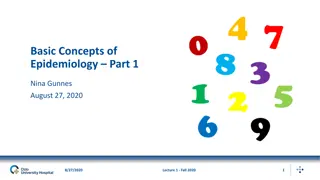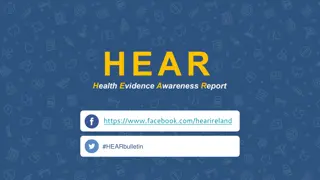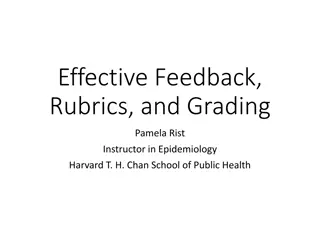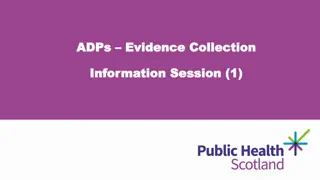Levels of Scientific Evidence in Epidemiology for Public Health Management
Levels of evidence in epidemiology play a crucial role in providing insights into the effectiveness of healthcare interventions. Various organizations like the U.S. Preventive Services Task Force and the Canadian Task Force have established criteria to categorize evidence based on study design and quality. These levels range from evidence obtained from randomized controlled trials to expert opinions. Understanding these levels is essential for making informed decisions in public health management. Guyatt GH et al. introduced a method for grading health care recommendations, emphasizing the significance of systematic reviews, meta-analyses, cohort studies, case-control studies, and other study designs in shaping evidence-based medicine.
Uploaded on Feb 26, 2025 | 0 Views
Download Presentation

Please find below an Image/Link to download the presentation.
The content on the website is provided AS IS for your information and personal use only. It may not be sold, licensed, or shared on other websites without obtaining consent from the author.If you encounter any issues during the download, it is possible that the publisher has removed the file from their server.
You are allowed to download the files provided on this website for personal or commercial use, subject to the condition that they are used lawfully. All files are the property of their respective owners.
The content on the website is provided AS IS for your information and personal use only. It may not be sold, licensed, or shared on other websites without obtaining consent from the author.
E N D
Presentation Transcript
Niveles de Evidencia Cientfica Maestr a en Epidemiolog a aplicada a la Gerencia de la Salud P blica
Niveles de Evidencia (U.S. Preventive Services Task Force (USPSTF) ) I: Evidence obtained from at least one properly designed randomized controlled trial II-1: Evidence obtained from well-designed controlled trials without randomization II-2: Evidence obtained from well-designed cohort or case-control analytic studies, preferably from more than one center or research group II-3: Evidence obtained from multiple time series designs with or without the intervention; dramatic results in uncontrolled trials might also be regarded as this type of evidence III: Opinions of respected authorities, based on clinical experience, descriptive studies, or reports of expert committees
Niveles de Evidencia (Canadian Task Force) I: Evidence obtained from at least one properly designed randomized controlled trial II-1: Evidence obtained from a well-designed cohort or case-control analytic study, preferably from more than one center or research group II-2: Evidence obtained from comparisons between times or places with or without the intervention III: Opinions of respected authorities, based on clinical experience, descriptive studies, or reports of expert committees
Niveles de Evidencia 1.Systematic reviews and meta-analyses 2.Randomized controlled trials with definitive results (confidence intervals that do not overlap the threshold of a clinically significant effect) 3.Randomized controlled trials with non-definitive results (a point estimate that suggests a clinically significant effect but with confidence intervals overlapping the threshold for this effect) 4.Cohort studies 5.Case-control studies 6.Cross-sectional surveys 7.Case reports Guyatt GH, Sackett DL, Sinclair JC, Hayward R, Cook DJ, Cook RJ. Users guides to the medical literature. IX. A method for grading health care recommendations. Evidence-Based Medicine Working Group. JAMA. 13 de diciembre de 1995;274(22):1800-4.
